August 2, 2015
Martha O'Kennon
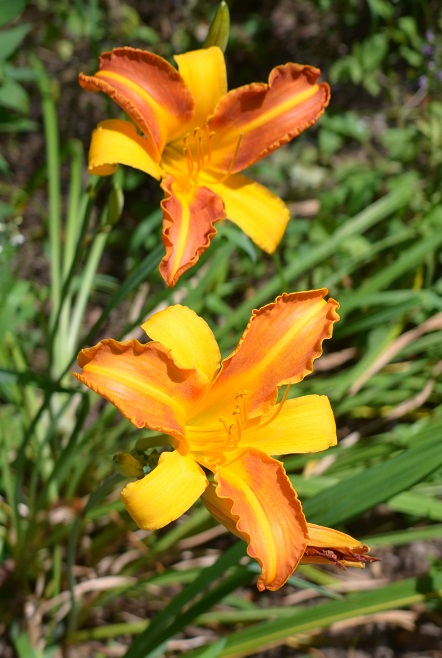

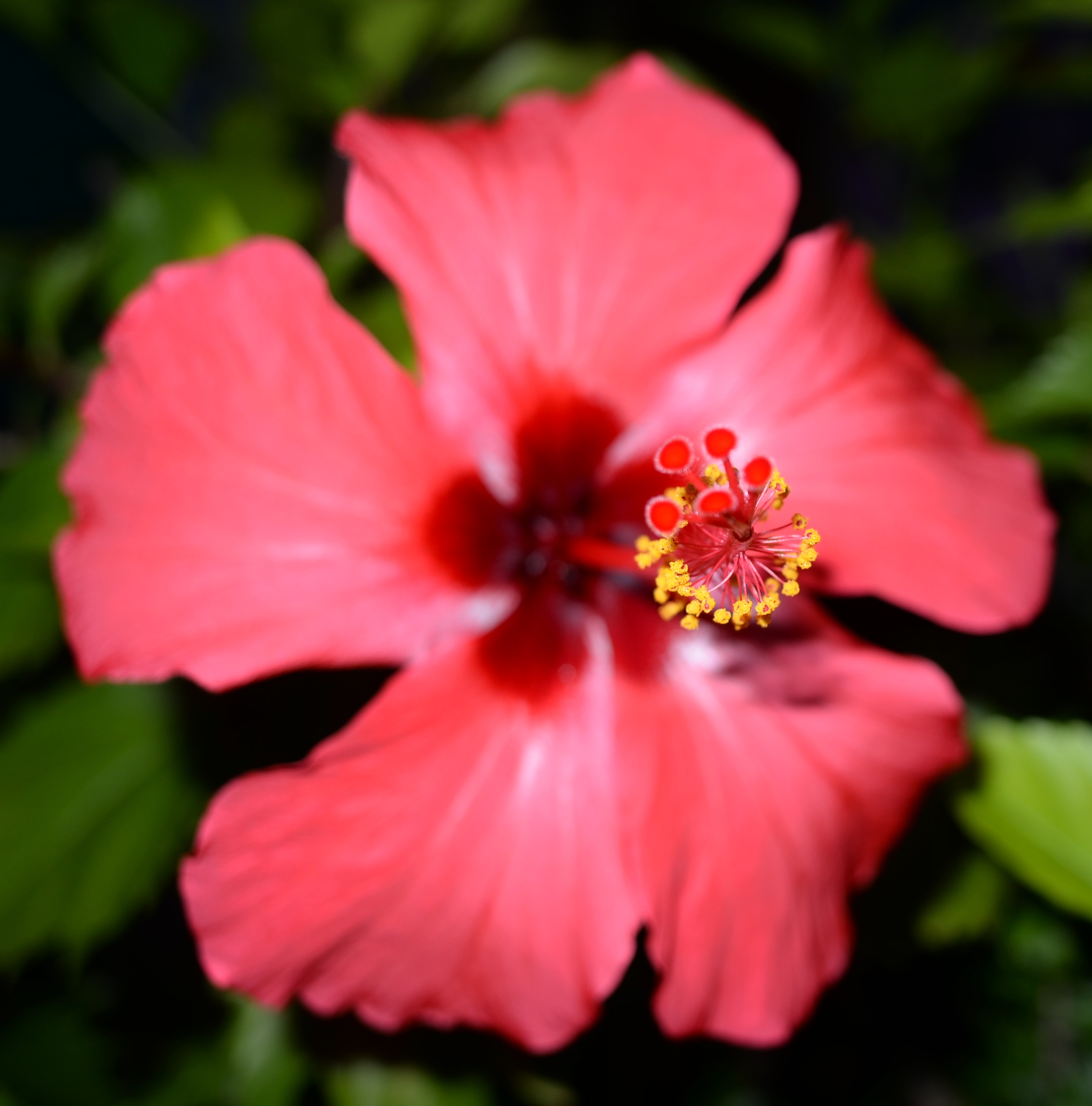
The Festival of Humidity has been held over for another week. But tonight as I sit compiling text and pictures, the window is open and a cool breeze is wafting through the house for a while. The trumpet vine is blooming for a bit longer, but there aren't too many other flowers to attract hordes of bees or wasps. And the deck hibiscus puts out a couple of flowers a day. (I was too slow with the camera but when I went out yesterday a hummingbird was having a feast on that hibiscus.) But look! On at least one aster plant a flower bud is getting ready to start the shocking show of pink and purple. The goldenrod is also starting to put out flower buds. Then the yard will be humming again for another month or more.
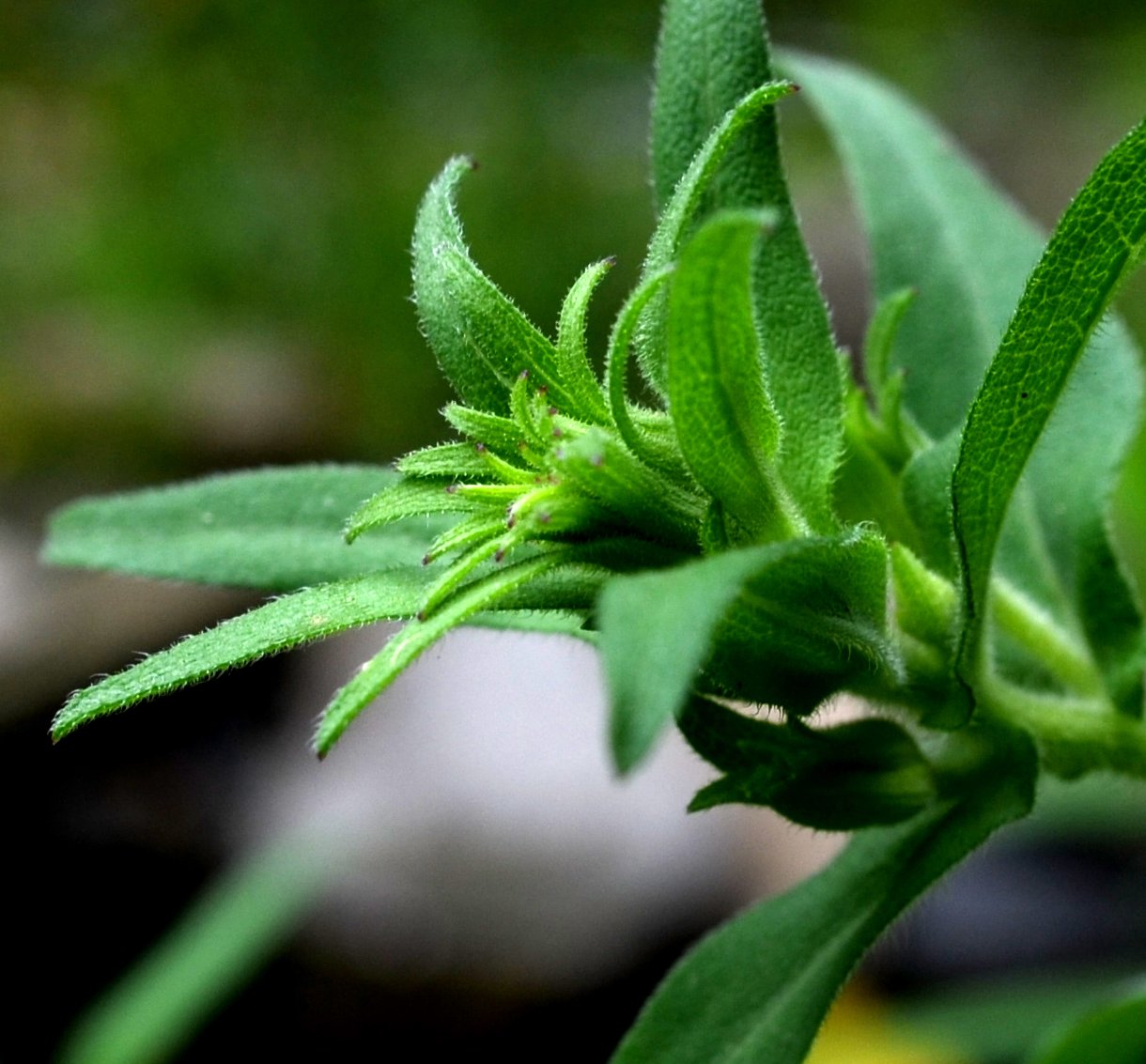
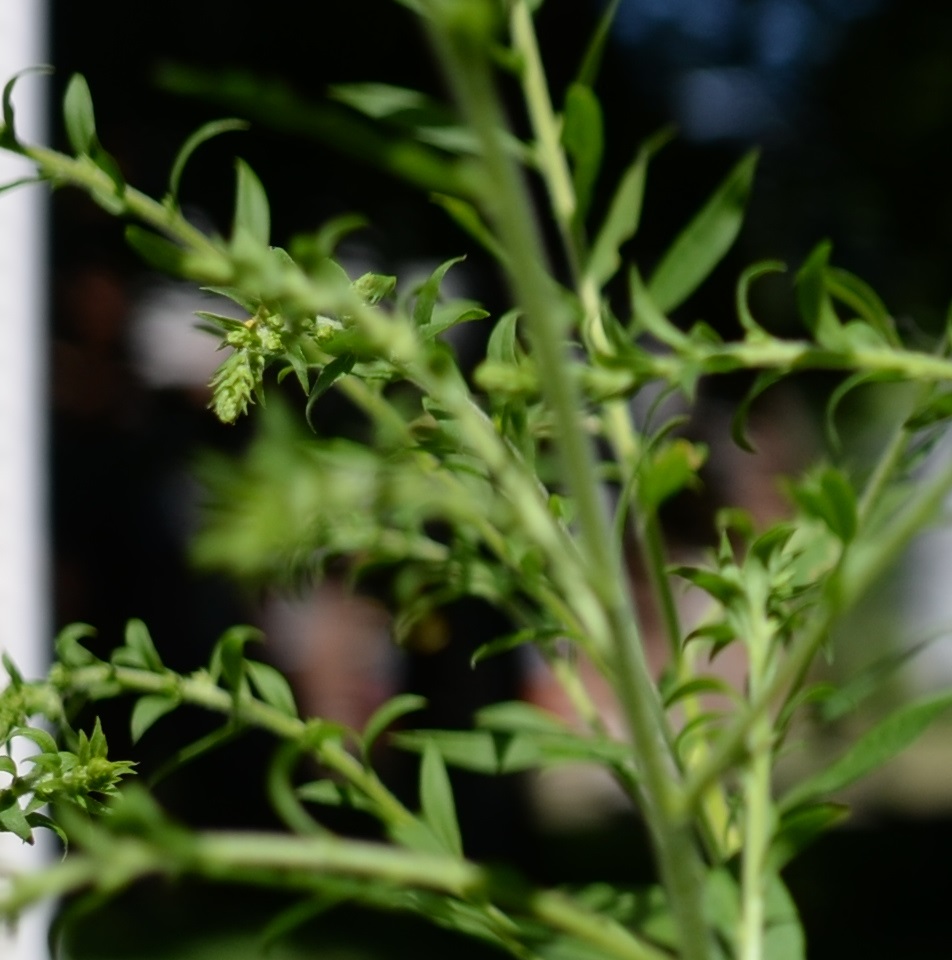
Remember that there is information in the name of the file for each image. You can see it by mousing over the image - look at the lower left of the screen.
Or you can click on the image to get to the (usually) larger image. Then the info is displayed in the address line above. If the image has been cropped
so that clicking on it doesn't result in a larger picture, you can always hit control plus at the same time to increase the size.
The big surprise this week was the imperial mothlings. I hope you remember that huge yellow and purplish-brown moth that was brought to me by a friend from the burg one over on the highway. She had laid a couple of dozen yellow eggs, which I thought were unfertilized. I kept an eye on the eggs for the 10 days that is the normal incubation for many of the large moths. Twelve days went by and day thirteen, just as I was about to throw out the eggs, I noticed that four of them had hatched. In this first picture, you can see the tiny caterpillars all coiled up in their shells. The next day about 20 hatched, and the third day a few more. The web said that they would be almost omnivorous. But they responded very little to the oak, maple and walnut leaves. Pine and sassafras were still on the menu, so I drove out to the country to get some sassafras and a small branch of scots pine. Again the cold shoulder to the sassafras, but amazingly they almost immediately voted with their feeties for the pine. Another minor surprise, the scots pine already had a couple of caterpillars of another sort on them. I'm now raising those two plus the couple dozen imperial babies. The baby imperials, which started out at about a quarter-inch or 5-6 mm, have now doubled in size. Aren't they sharp-looking in their tiny stag-horns?
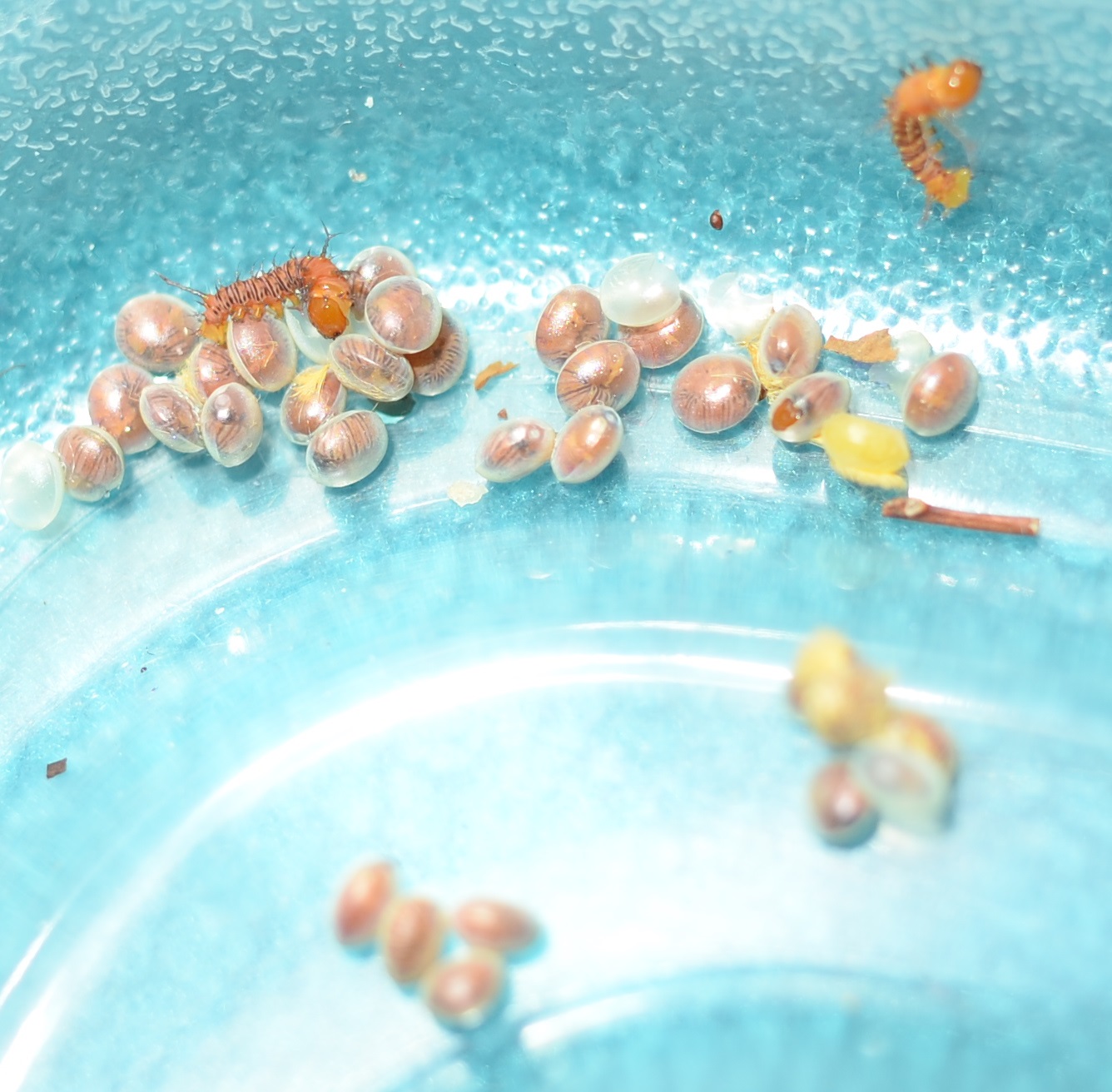
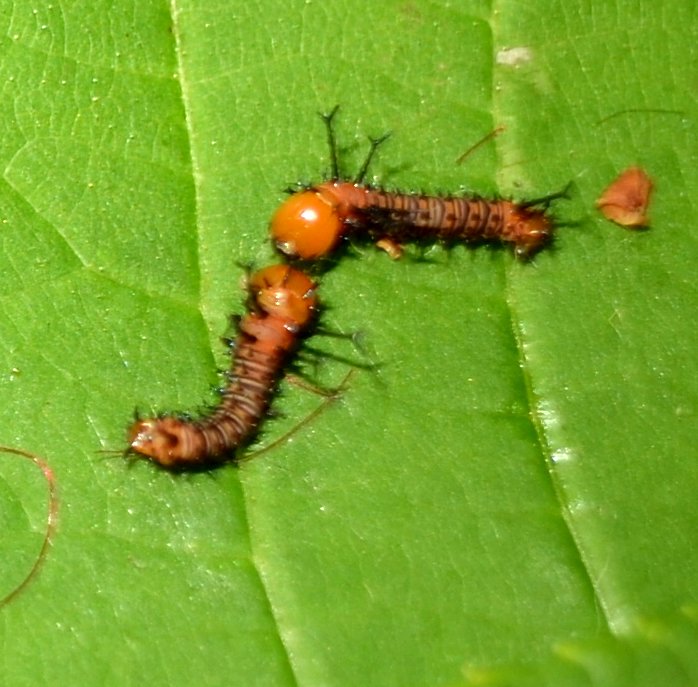


There were a few more caterpillars. The hickory tussock moth caterpillar reappeared on the shop wall, and these minuscule caterpillars were making rows of tracks on the hibiscus that makes the enormous flowers.

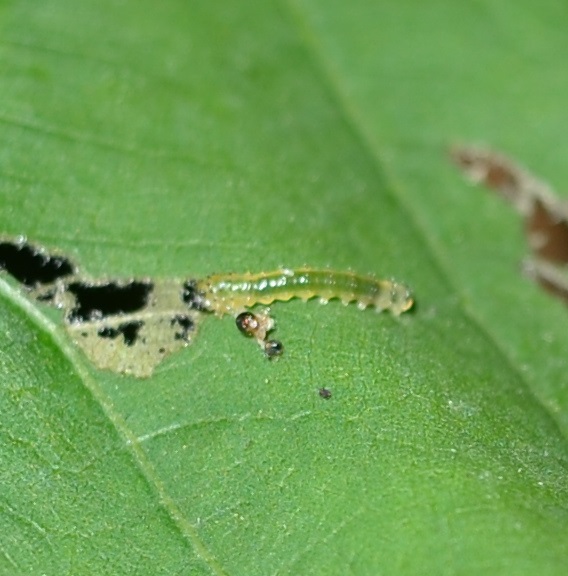
The bugs did very well this week. Last year I only saw ONE of the "buffalo treehoppers" but now I can find one or two every day. Of course there are the two kinds and it is very hard to tell the difference. They both enjoy sitting on the top of a tiger lily stalk, or on a raspberry leaf. Here is the one I would say is the dark one, and next is the "light" one. Picture 3 shows one of the two-mark treehoppers (thorn bugs) next to a couple of eggs. I've been expecting those eggs for a long time so it was a treat to see them. (If you
don't see any eggs, they're the scaly white round things.)
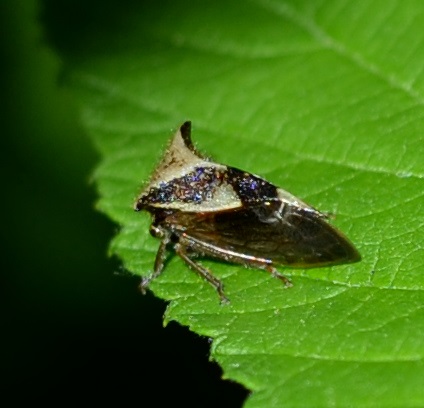
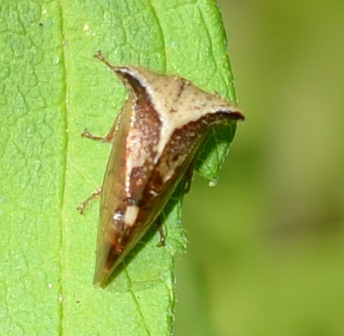
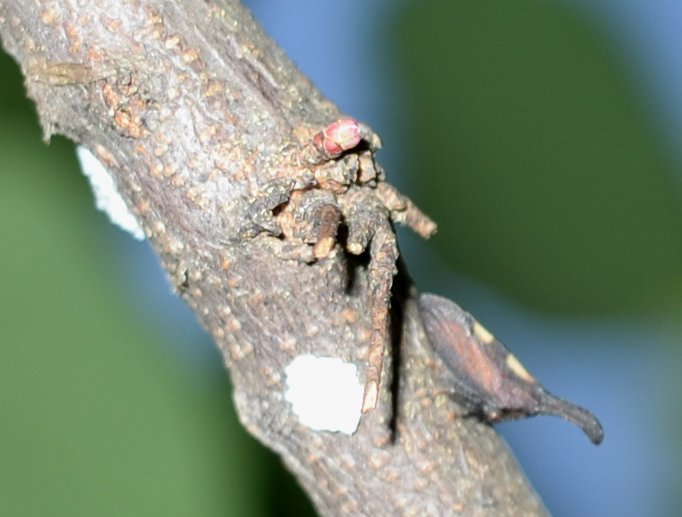
While spying on the two-marked treehopper that lives in the redbud tree, I saw (once again) that little alder spittlebug. Now redbuds and
alders aren't related so I figure there must be some alder near here. Or this is a relative of the alder spittlebug that lives on redbud. Picture 2 shows it from the top. I edited the picture to accentuate the stripes - that's the front end of this bug. Now if you can absorb the shift from the pond area to the weedpatch, we can look at the third kind of treehopper in this yard - the one that loves the thistle. That's a nymph on the twig above the adult.
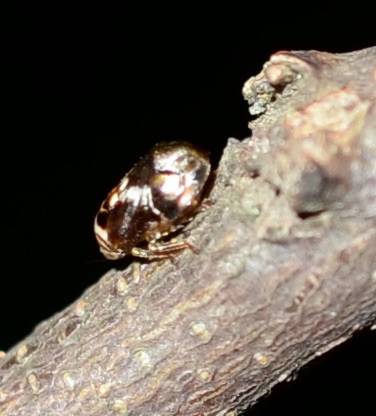
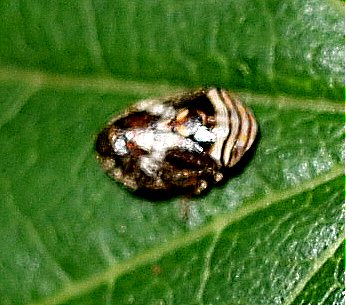
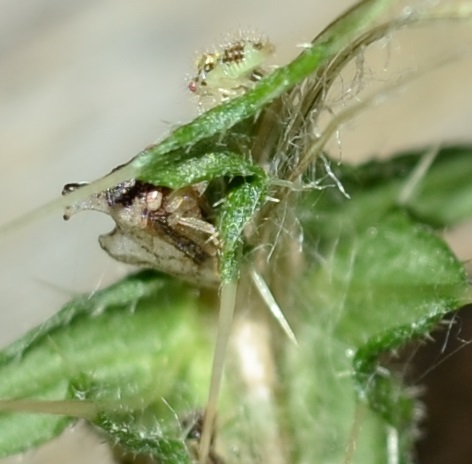
More of those thistle-lovin' treehoppers. They came in all sizes and length of development. I believe the ones that look like the two-humped adult are whitish just after moulting that old skin.
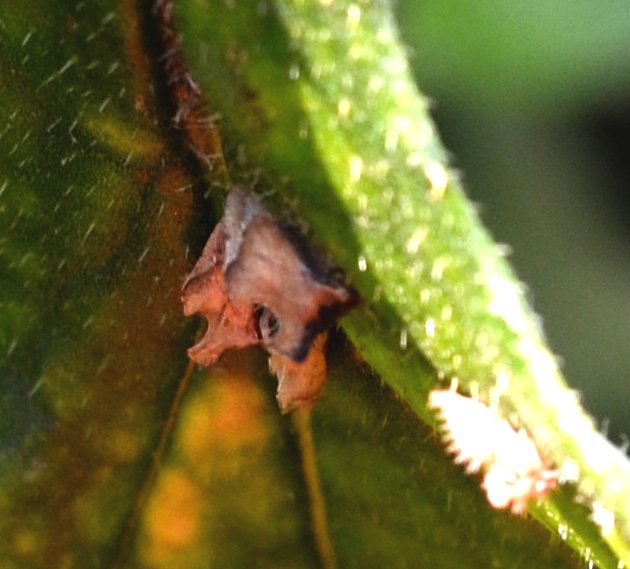
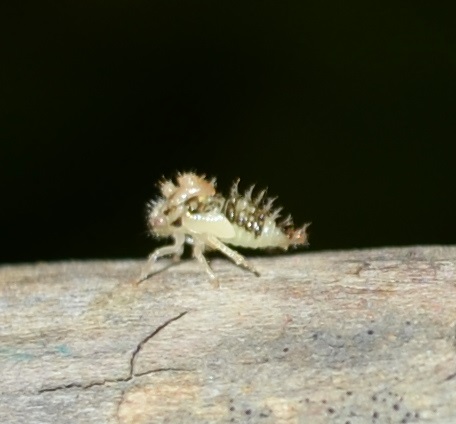
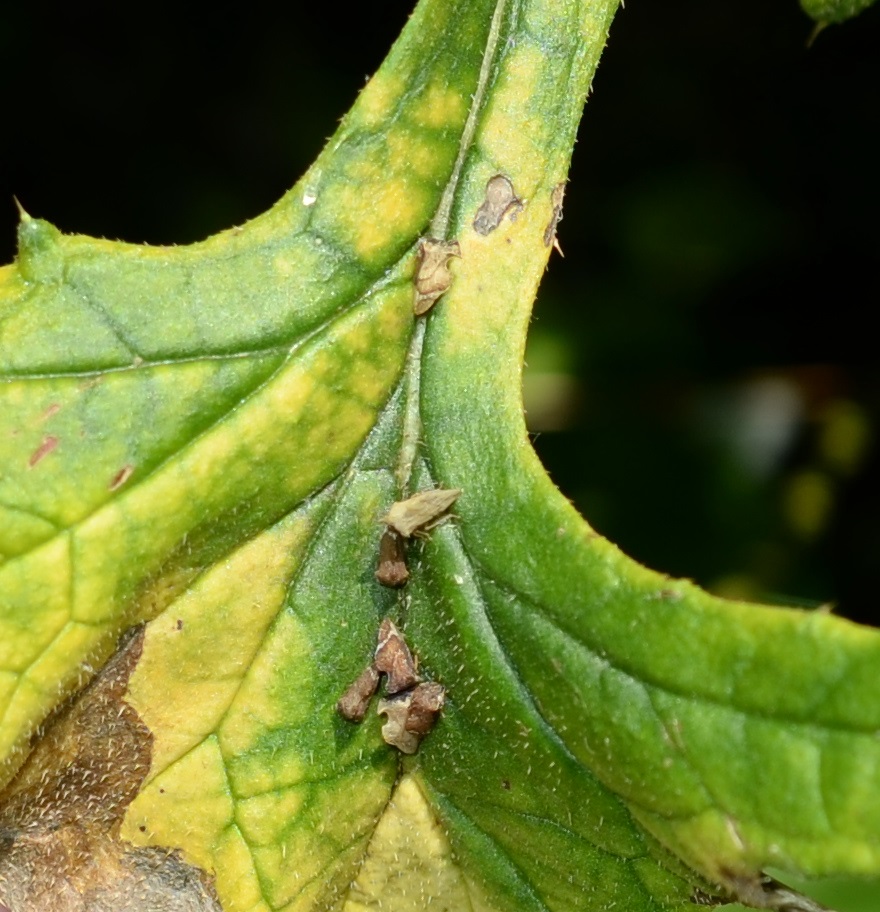
But there were other kinds of bugs too. One was the adult assassin bug, all grown up. Then there was another bug called the green stink bug, but this one is happily ornate - maybe that's why it is called Chinavia hylaris. In case you're wondering what that red and white background is, I had to bring the little fellow inside and it's walking on the dining room table cloth.



A goodly number of leafhoppers were to be found on various plants. The first one in this paragraph was found on raspberry, the others on asters.


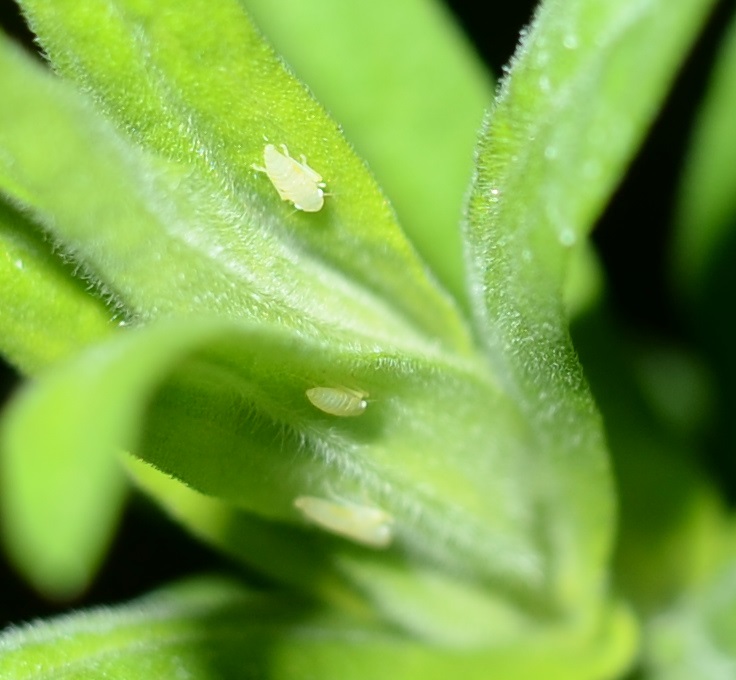
Only one dragonfly - the one you've seen before - the orange-brown one whose mate will be red if we ever see one. We will soon, I'm sure. They stuck around a long time last year. There was only one new beetle, this fuzzy-looking one. And only one butterfly, this little skipper. But there were a number of real flies, including this crane fly, which seems to have been printed with a pattern.
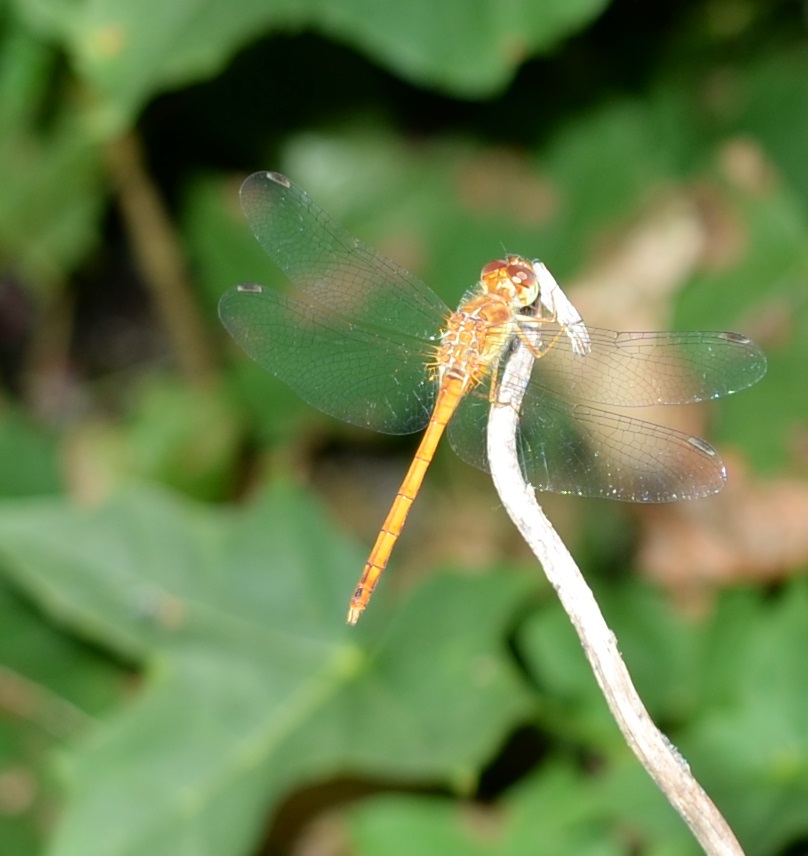
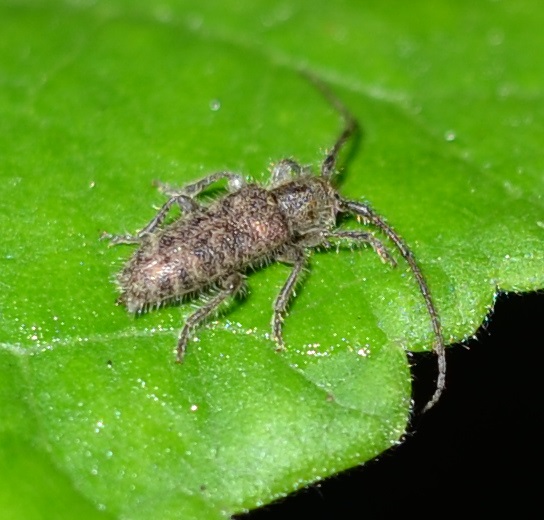
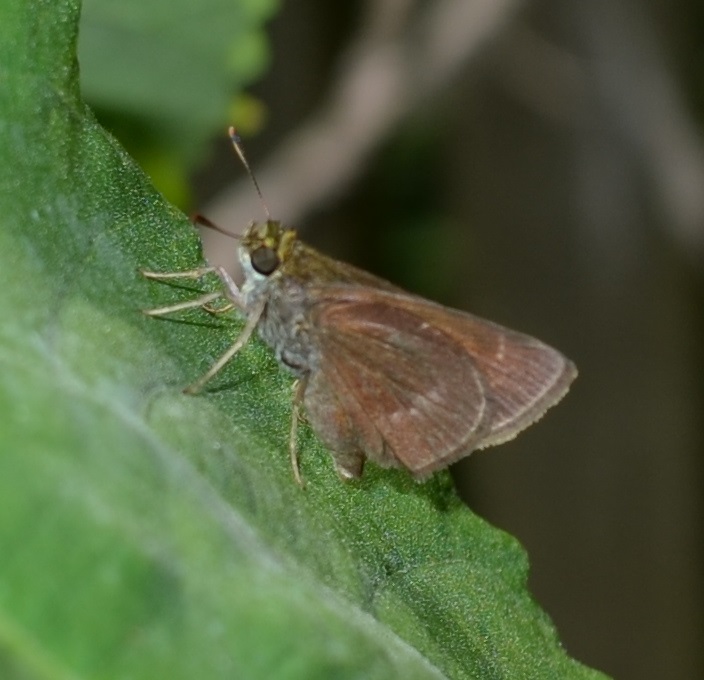
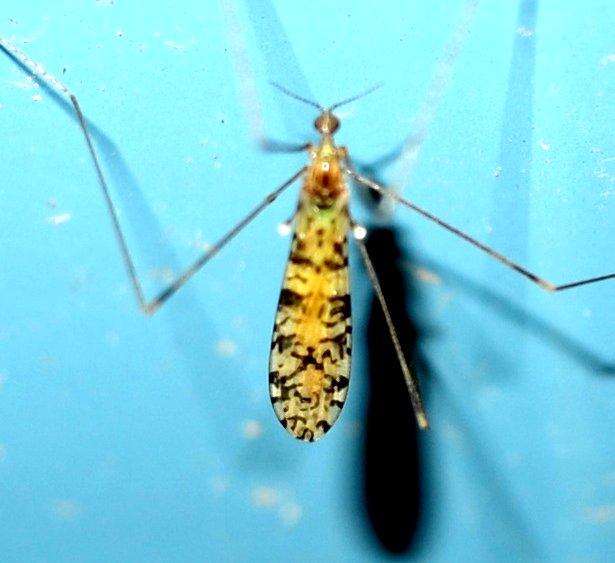
A short excursion into other insects that look as if their patterns come from block printng. Last week's Giant Leopard Moth seems printed with circles. One of my neighbors found this Ailanthus Webworm Moth while on vacation. Its flower pattern seems almost human-designed. But my favorite is this leafhopper that seems to have been painted with a big white daisy on the left and then a delicate water-inpired blue swirl.
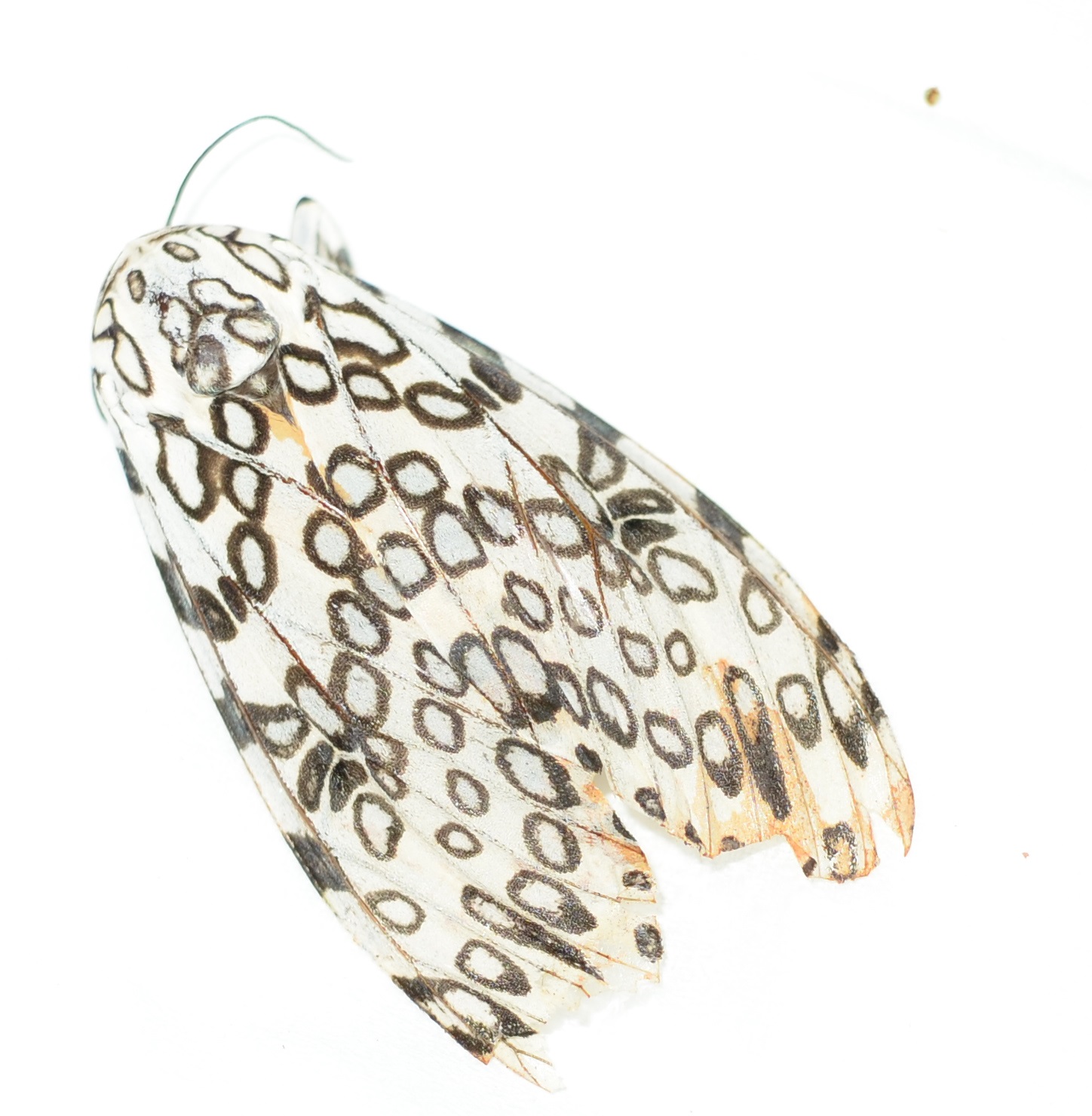
 from jim whitehouse 5 21 15a.jpg)
 -- Deltocephalinae -- Scaphoideus- 6 24 15 2.jpg)
First some more flies: the ever-present tiny hover fly; a new face on the Queen Anne's lace looks like a new kind of wasp - but no, it's a fly. If you could see it hesitate in mid-flight you would be more easily convinced. By the way, I started last week to tell you about the spot in the center of the flower. It is supposed to be the drop of blood where Queen Anne pricked her finger while making lace. The long-legged flies are all over everything, as are most of the ones you've already seen more than twice. One interesting turn is that this time I got a good look at the scorpion fly from various angles. The dorsal view doesn't show the long nosed face and doesn't do very much with the curled-up tail which really does look like the tail of a loaded scorpion. And here is a large robber fly seeing what he can find
on the ground.
;
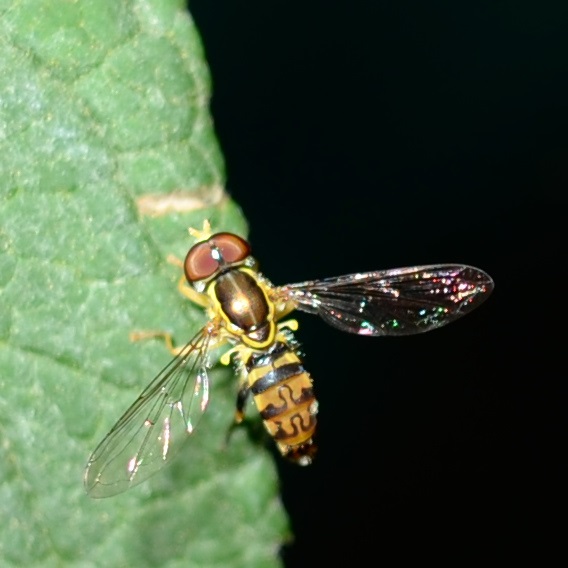

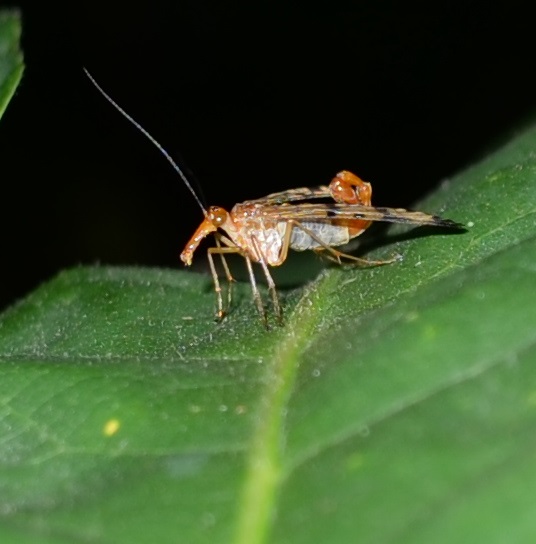
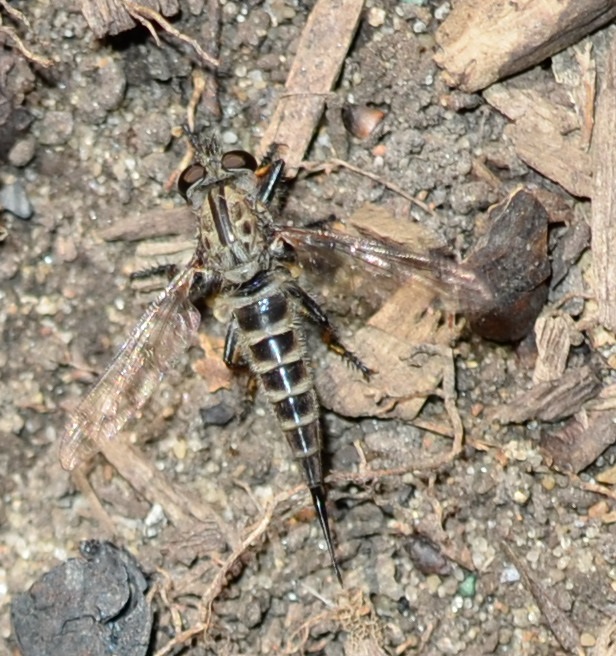
Let's review our wasp relatives. This black and white one was taking advantage of the end of trumpet vine season, as is the potter wasp.
;
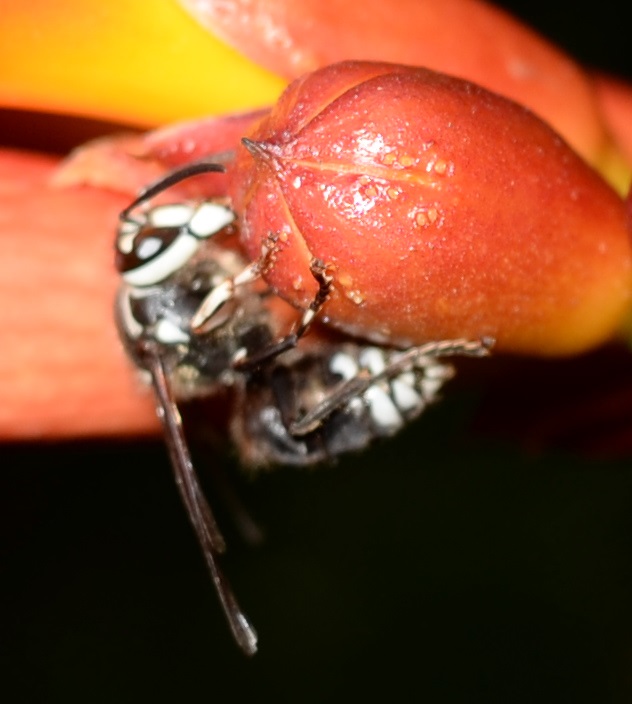
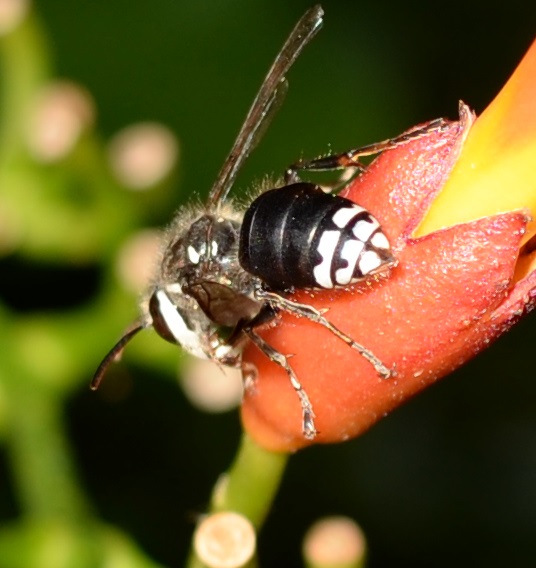
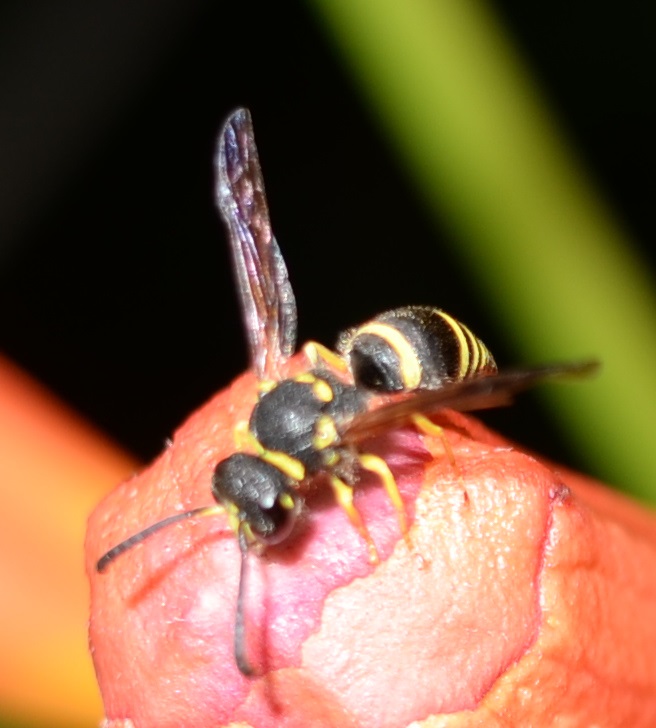
Also on the trumpetvine, an old mystery friend, and quick to follow, a honey bee mimicking a hover fly - just hovering and hovering. Then on the coneflower, a new bee and a new bee/wasp.


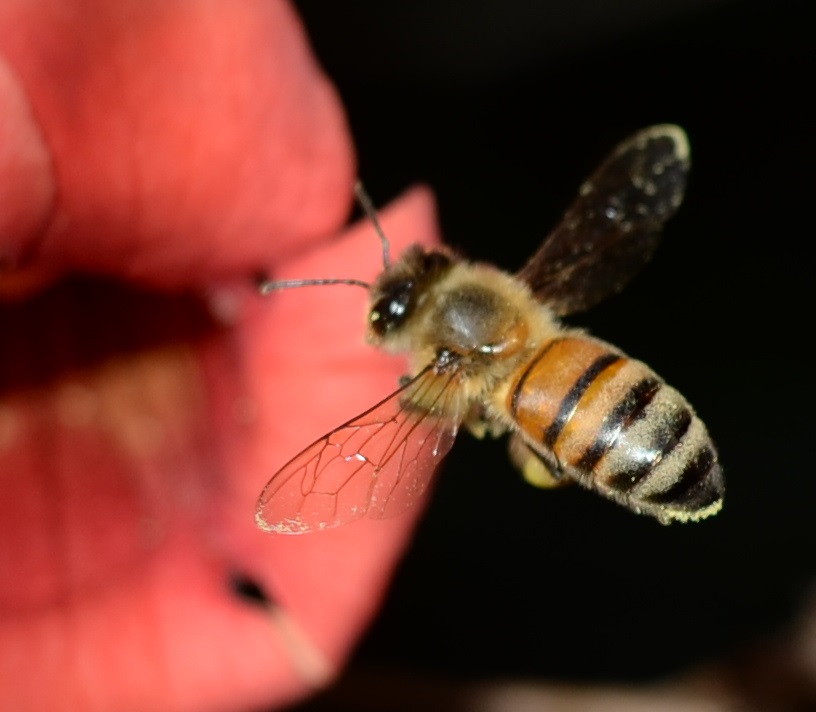
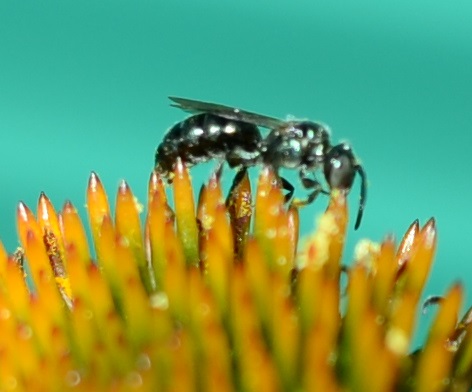
The other branch of the Hymenoptera, the ichneumons, were well-represented. The first I don't know much about other that it is a regular customer, but the second one is quite goldenl
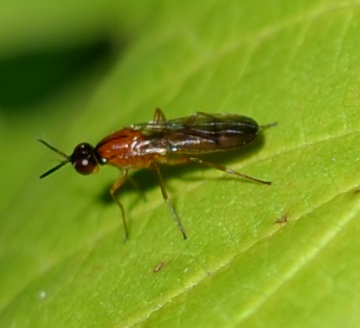
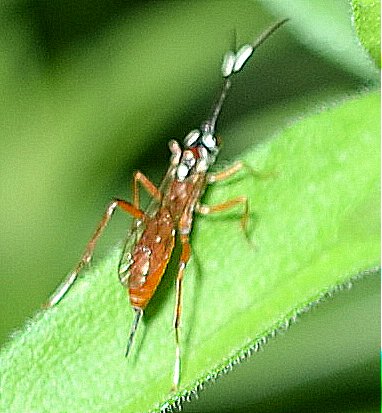

Under Orthoptera, we had only one Katydid nymph, but they seemed to be spread out all over the yard. Remember there was one in the zinnias on the deck? I haven't seen one there in some time, but this female (or a few of her friends) began showing up in the side yard. Here she is in the tiger lilies in the weed patch.
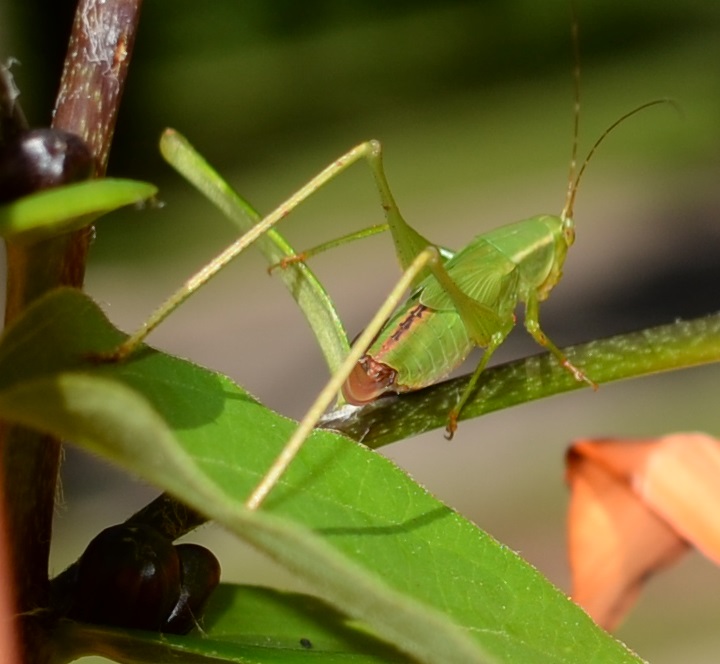
The spiders are not so apparent as before. There are now so many weeds for them to hide in. You mostly spot the sheetweb weavers, as their filmy webs are so obvious. But here is a good-sized spider on the shop wall, and a tiny tiny northern crab spider in the aster leaves. Are they getting ready for the flowers to come soon? By the time these little crabs are big enough to maffick in the aster flowers, there should be aster flowers for them.
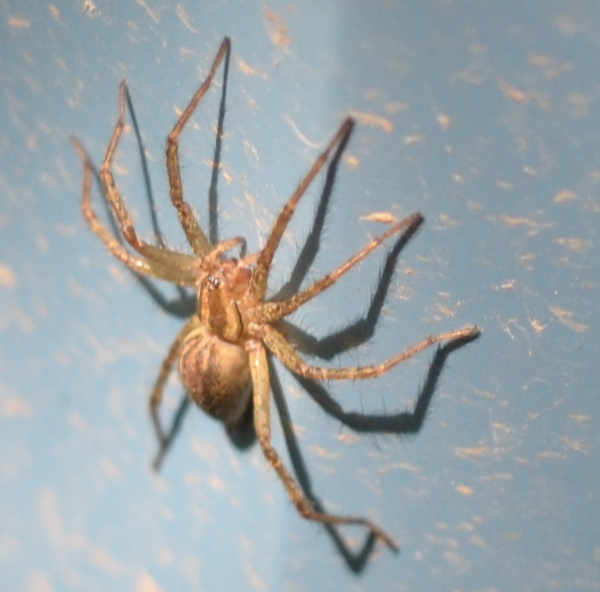
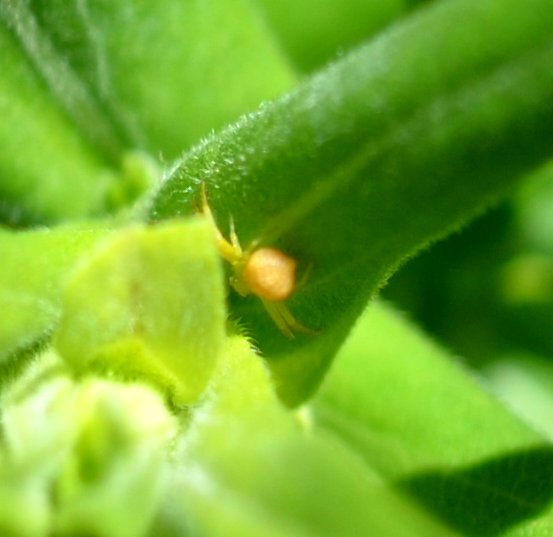
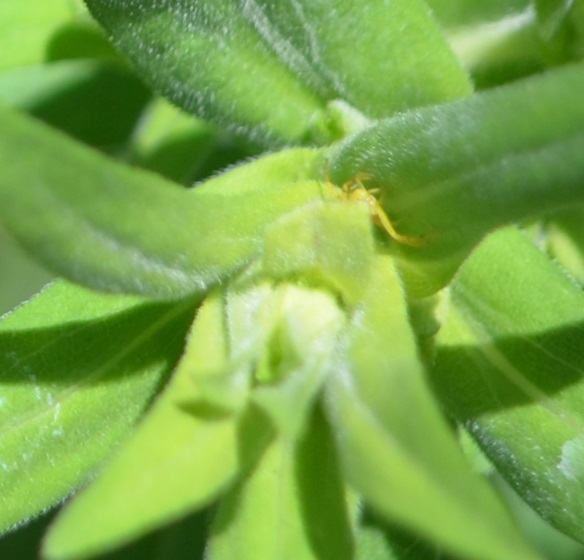
I hope you had a good time romping in the weeds and discovering what is in there. The mosquitoes are nowhere near so bad as they were, so come over. We'll drink the good coffee and just catch up on old times, and maybe we'll see something neither of us has ever seen. Come on
over!
Back to July 27
On to August 9
Back to 2015 menu
Back to main menu
copyright Martha O'Kennon 2015


































 from jim whitehouse 5 21 15a.jpg)
 -- Deltocephalinae -- Scaphoideus- 6 24 15 2.jpg)

















